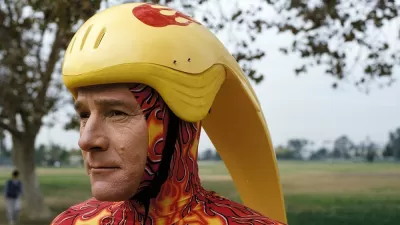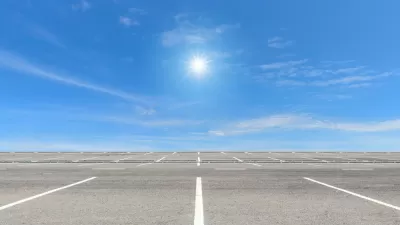There's only a few more days left of the Olympics, and that's sad, but there's still time to learn about the wonders of the sport of race walking, formerly known as "Pedestrianism."

An article by Marissa Payne details the sport of race waling, which has provoked more than one joke on Twitter about the participants looking like they are making a beeline for the bathroom.
As Payne notes, however, there is a very serious technique involved with mastering the sport—technique that differs greatly from running:
For starters, race walking isn’t just slow running. It requires an entirely different technique. Whereas you can bend both your knees however you like in running, in race walking the leading leg must be completely straightened when it makes contact with the ground and stay that way until it’s lifted again. The other major difference from running is that race walkers must have at least one foot touching the ground at all times. If race walkers violate either of those two rules, a judge, who closely follows the athletes throughout the race (that’s either 20 or 50 kilometers in the Olympics), will dole out a red-card violation.
The history of the sport is also of great interest to fans of walking and also maybe pedestrian advocates.
The article calls on Matthew Algeo, author of the book Pedestrianism, to describe the sport’s roots. According to Algeo, race walking (pedestrianism as it was known then) "was far more popular than running, too, in the past." Races spanned hundreds of miles—sometimes even 1,000 miles—and large wagers were riding on the results. Hence the sport's addition to the Olympic games, according to
By the turn of the century, “pedestrianism” became so popular that it was added to the 1904 Olympics as part of the decathlon. Not satisfied, race walkers finally got their own event in 1932, but it was a far cry from the thousand-mile races of the past. The event was only (and, I use that word relatively) 50 kilometers.
As a parting gift, we'd like to remind everyone that Bryan Cranston, of fame and critical acclaim for his role on the show Breaking Bad, once played up the sport of race walking to humorous effect in his previous role on Malcolm in the Middle.
FULL STORY: The butt of Olympic jokes today, race walking used to be an American favorite

Alabama: Trump Terminates Settlements for Black Communities Harmed By Raw Sewage
Trump deemed the landmark civil rights agreement “illegal DEI and environmental justice policy.”

Planetizen Federal Action Tracker
A weekly monitor of how Trump’s orders and actions are impacting planners and planning in America.

Why Should We Subsidize Public Transportation?
Many public transit agencies face financial stress due to rising costs, declining fare revenue, and declining subsidies. Transit advocates must provide a strong business case for increasing public transit funding.

Understanding Road Diets
An explainer from Momentum highlights the advantages of reducing vehicle lanes in favor of more bike, transit, and pedestrian infrastructure.

New California Law Regulates Warehouse Pollution
A new law tightens building and emissions regulations for large distribution warehouses to mitigate air pollution and traffic in surrounding communities.

Phoenix Announces Opening Date for Light Rail Extension
The South Central extension will connect South Phoenix to downtown and other major hubs starting on June 7.
Urban Design for Planners 1: Software Tools
This six-course series explores essential urban design concepts using open source software and equips planners with the tools they need to participate fully in the urban design process.
Planning for Universal Design
Learn the tools for implementing Universal Design in planning regulations.
Caltrans
Smith Gee Studio
Institute for Housing and Urban Development Studies (IHS)
City of Grandview
Harvard GSD Executive Education
Toledo-Lucas County Plan Commissions
Salt Lake City
NYU Wagner Graduate School of Public Service





























